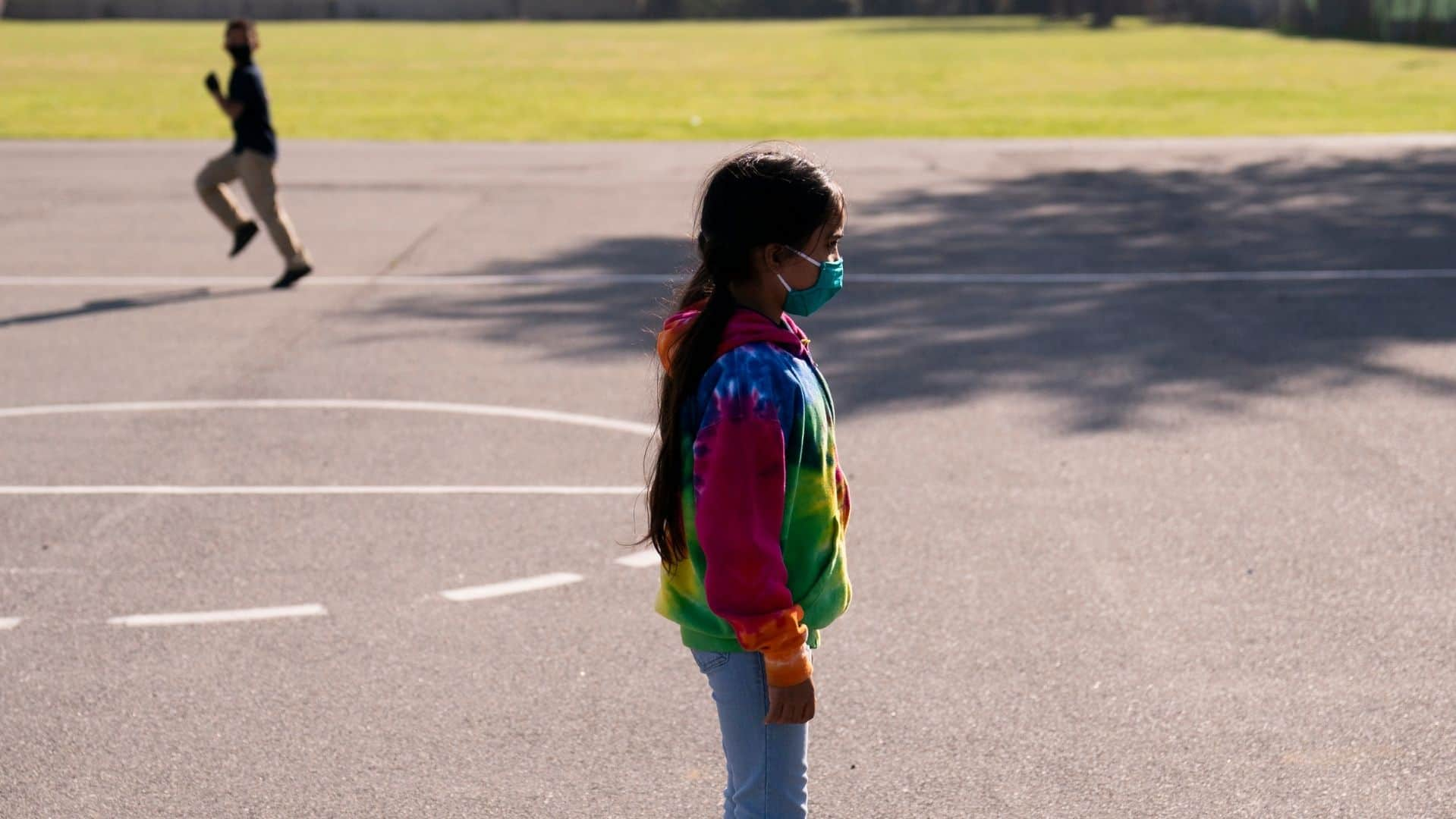Health
Why COVID is a key suspect in severe hepatitis cases in kids worldwide – CBC News

This is an excerpt from Second Opinion, a weekly health and medical science newsletter. If you haven’t subscribed yet, you can do that by clicking here.
Unexplained severe acute hepatitis cases among children continue to emerge in Canada and around the world, and while health officials desperately search for a cause of the mysterious illness, researchers are pointing to a possible link to COVID-19.
The World Health Organization (WHO) said Tuesday there are now at least 348 probable cases of severe acute hepatitis — or inflammation of the liver — in children under investigation worldwide, which aren’t caused by the usual hepatitis viruses or any other clear source.
In Canada, more than a dozen possible cases have been reported across multiple provinces since the Public Health Agency of Canada (PHAC) confirmed earlier this month that some cases of the severe liver disease were under investigation.
While an early line of investigation from U.K. health officials emphasized possible links to adenovirus, a family of viruses typically known for causing mild cold or flu-like illness, global teams are also zeroing in on potential impacts from SARS-CoV-2, the virus behind COVID-19.
Toronto’s Hospital for Sick Children has identified seven probable cases of a mysterious liver disease affecting children around the world. To date, 348 probable cases have been identified across 20 countries.
Research suggests possible link to COVID
A recent American case study published in the Journal of Pediatric Gastroenterology and Nutrition analyzed a previously healthy three-year-old girl who developed acute liver failure a few weeks after recovering from a mild COVID infection.
“The patient had liver biopsy findings and blood testing consistent with a type of autoimmune hepatitis which may have been triggered by COVID infection,” said Dr. Anna Peters, a pediatric gastroenterologist at the Cincinnati Children’s Hospital Medical Center.
Peters, the lead author on the study, said that while it was impossible to prove that COVID directly caused the liver disease in this case — it is possible the virus triggered an “abnormal immune response” that then attacked the liver.
“I think it’s important for physicians to be aware that this is a rare condition that may happen during or after COVID infection. It’s important to check liver tests in patients who aren’t improving as expected,” she said.
“Parents shouldn’t panic, but see their pediatrician or primary care doctor if their child is ill. Prompt diagnosis and provision of supportive care is key to recovery.”
Peters said the patient in the case study did recover after treatment and a liver transplant was avoided, but that the case may be similar to cases reported in the U.K. and globally.
Israeli physician Dr. Yael Mozer Glassberg previously told CBC News that her team at Schneider Children’s Medical Center has also treated at least eight unexplained cases of hepatitis since Feb. 2021, before the WHO’s starting point of Oct. 2021 for “probable” cases.
Medical staff analyzed those cases and the only commonality was that each child had faced a previous bout of COVID-19, identified through serological testing and each family’s medical history. None of the patients tested positive for adenovirus, Mozer Glassberg said.


COVID ‘common factor’ among cases
An Indian research team also studied whether COVID-19 may have caused dozens of unexplained cases of severe acute hepatitis in children in Central India between April and July 2021, and their results are only now gaining attention due to similar cases worldwide.
Their observational pre-print study, which has not yet been peer reviewed due to challenges with funding, analyzed 475 children from throughout India who had tested positive for COVID-19 — 47 of whom presented with severe hepatitis.
Among that group, 10 were found to have symptoms of Multiple Inflammatory Syndrome in children (MIS-C) and were ruled out, while the remaining 37 were classified as having what the researchers named COVID-19 Associated Hepatitis in Children (CAH-C).
“The one common factor we found was that they all were infected with, or they all had a history of COVID,” said Dr. Sumit Rawat, lead author, microbiologist and associate professor at Bundelkhand Medical College in Madhya Pradesh, India, in a phone interview.
“We also did antibody testing for COVID in these children, and the maximum number of children who were coming in with this were antibody positive.”
The Indian researchers looked for other common causes behind the 37 cases of severe acute hepatitis — everything from hepatitis A, C, E and others like varicella-zoster virus, herpes and cytomegalovirus (CMV) — but found nothing that could explain the symptoms.
Rawat said not all 37 cases were tested for the presence of an adenovirus at the time, but 17 samples were later analyzed from archives and only three tested positive for adenovirus.
“To prove that the COVID itself is causing this hepatitis it will require a lot more effort,” said Rawat. One significant hint, he said, was that hepatitis cases seemed to drop off when COVID stopped circulating widely in the region, but picked up again when cases were high.
“Suddenly there was a drop in [COVID] cases and we did not find any [hepatitis] cases for the next six months, until COVID reappeared again.… So that is also highly suspicious that these cases are actually related to COVID.”
A liver illness affecting 169 children in the U.S. and Europe is, so far, a ‘medical mystery,’ says infectious disease specialist Dr. Isaac Bogoch, and it’s premature to attribute it to any one virus or cause.
Adenovirus remains leading theory in U.K.
While other global research teams were ringing alarms about potential links to COVID, international health organizations are taking time to investigate a variety of possible causes.
Dr. Philippa Easterbrook, a senior scientist at the WHO’s HIV, hepatitis and sexually transmitted infection program, shifted tone this week and said there were “some refinements of the working hypotheses” put forward by the UK Health Security Agency.
“The leading hypotheses remain those which involve adenovirus, but I think with … an important consideration of the role of COVID as well, either as a co-infection or as a past infection,” she said during a press conference Tuesday.
There have been more than 170 cases of acute hepatitis identified in children under 16-years-old in the U.K. since Jan. 1, which haven’t been linked to the usual hepatitis viruses. Eleven patients required a liver transplant.
Roughly 70 per cent of those cases tested positive for adenovirus, but a little under 20 per cent tested positive for the virus behind COVID, the U.K. Health Security Agency (UKHSA) noted in its latest briefing note.
Serological testing is also in process by the agency, which is a method used to see if patient samples contain antibodies from prior infection. On Friday, a joint WHO and European Centre for Disease Prevention and Control briefing note said Europe-wide, serological testing on a small number of patients showed roughly 74 per cent were positive for antibodies to SARS-CoV-2.
The U.K. team is now pulling on multiple threads, including a normal adenovirus infection gone awry due to a lack of exposure to viruses during the pandemic, or an exceptionally large wave of infections causing a rare complication to present more frequently, or an unusual bodily response tied to a co-infection — or prior infection — with SARS-CoV-2.
It could also be a new type of adenovirus or coronavirus variant, or a post-COVID syndrome including one from Omicron specifically, or linked to a new pathogen altogether, in addition to a drug, toxin, or environmental exposure.
It’s all tough to parse, stressed Dr. Jordan Feld, a clinician-scientist at the Toronto Western Hospital Liver Clinic, since viruses can cause mild disease in one person and a very different outcome in another — much like the way COVID can.
Doctors aren’t sure what’s causing a mysterious liver disease outbreak that’s been seen in kids from a dozen countries around the world. While at least one child has died, experts insist most children will fully recover from the disease.
“The key here will be — assuming that there is really a problem — is really then teasing apart, what is it that’s different about these kids, either their genetics, their environment or something else that’s causing their reaction,” he said.
“That’s kind of the same thing in the liver. And sometimes you can see liver injury happening relatively late in the course of a viral infection. So someone might contract an infection and then it’s only weeks later that it manifests.”
‘Rare phenomenon’
While multiple lines of investigations abound, a few questionable theories have been largely ruled out by officials in the U.K.
For one thing, there’s “no evidence” of a link between COVID-19 vaccination and these cases of acute hepatitis, the UKHSA has said, noting there were no vaccinations recorded in patients under five — the age group making up more than three-quarters of the cases.
Some media outlets also latched on to survey data showing a high rate of exposure to dogs, but UKHSA epidemiologist Meaghan Kall said on Twitter that the hypothesis is “far fetched” given how common dog ownership is in the U.K., and was merely included in the latest briefing note for transparency.
Other experts stressed these so-far unexplained cases remain rare, with further analysis needed to determine whether or not they’re truly happening more frequently than in a typical year.


At the Hospital for Sick Children in Toronto, where seven probable cases dating back to October have been reported, chief of infectious diseases Dr. Upton Allen said facilities “regularly but rarely” treat children with severe inflammation of the liver.
The hospital usually experiences from zero to two cases per month, he said. “So we’re not there yet to definitively say that this represents a new signal.”
Feld agreed more work is needed to determine the scope of the apparent global outbreak of cases and how it compares to hepatitis among children in years prior — and if there’s indeed a spike.
For now, he said, there’s no clear smoking gun.
When it comes to possible links to adenovirus or SARS-CoV-2, Feld stressed researchers need to tease out how these severe patient outcomes compare to the many more children who had infections but didn’t wind up with hepatitis.
“Why is it that these certain kids are getting sick … and the vast majority are not? Is it something about the kids? Is it something about the strain of the virus? Is it something in the environment, that these kids are doing, that may have changed the course of their infection?” he said.
“Because, remember, this is still a rare phenomenon.”
Physicians say possible symptoms of hepatitis can include jaundice — yellowing eyes and skin — dark urine, pale stool, abdominal pain, and vomiting.
Health
Interior Health delivers nearly 800K immunization doses in 2023
|
|
Interior Health says it delivered nearly 800,000 immunization doses last year — a number almost equal to the region’s population.
The released figure of 784,980 comes during National Immunization Awareness Week, which runs April 22-30.
The health care organization, which serves a large area of around 820,000, says it’s using the occasion to boost vaccine rates even though there may be post-pandemic vaccine fatigue.
“This is a very important initiative because it ensures that communicable diseases stay away from a region,” said Dr. Silvina Mema of Interior Health.
However, not all those doses were for COVID; the tally includes childhood immunizations plus immunizations for adults.
But IHA said immunizations are down from the height of the pandemic, when COVID vaccines were rolled out, though it seems to be on par with previous pre-pandemic years.
Interior Health says it’d like to see the overall immunization rate rise.
“Certainly there are some folks who have decided a vaccine is not for them. And they have their reasons,” said Jonathan Spence, manager of communicable disease prevention and control at Interior Health.
“I think there’s a lot of people who are hesitant, but that’s just simply because they have questions.
“And that’s actually part of what we’re celebrating this week is those public health nurses, those pharmacists, who can answer questions and answer questions with really good information around immunization.”
Mima echoed that sentiment.
“We take immunization very seriously. It’s a science-based program that has saved countless lives across the world and eliminated diseases that were before a threat and now we don’t see them anymore,” she said.
“So immunization is very important.”





Health
Remnants of bird flu virus found in pasteurized milk, FDA says


|
|
The U.S. Food and Drug Administration said Tuesday that samples of pasteurized milk had tested positive for remnants of the bird flu virus that has infected dairy cows.
The agency stressed that the material is inactivated and that the findings “do not represent actual virus that may be a risk to consumers.” Officials added that they’re continuing to study the issue.
“To date, we have seen nothing that would change our assessment that the commercial milk supply is safe,” the FDA said in a statement.
The announcement comes nearly a month after an avian influenza virus that has sickened millions of wild and commercial birds in recent years was detected in dairy cows in at least eight states. The Agriculture Department says 33 herds have been affected to date.
FDA officials didn’t indicate how many samples they tested or where they were obtained. The agency has been evaluating milk during processing and from grocery stores, officials said. Results of additional tests are expected in “the next few days to weeks.”
The PCR lab test the FDA used would have detected viral genetic material even after live virus was killed by pasteurization, or heat treatment, said Lee-Ann Jaykus, an emeritus food microbiologist and virologist at North Carolina State University
“There is no evidence to date that this is infectious virus and the FDA is following up on that,” Jaykus said.
Officials with the FDA and the USDA had previously said milk from affected cattle did not enter the commercial supply. Milk from sick animals is supposed to be diverted and destroyed. Federal regulations require milk that enters interstate commerce to be pasteurized.
Because the detection of the bird flu virus known as Type A H5N1 in dairy cattle is new and the situation is evolving, no studies on the effects of pasteurization on the virus have been completed, FDA officials said. But past research shows that pasteurization is “very likely” to inactivate heat-sensitive viruses like H5N1, the agency added.
Matt Herrick, a spokesman for the International Dairy Foods Association, said that time and temperature regulations for pasteurization ensure that the commercial U.S. milk supply is safe. Remnants of the virus “have zero impact on human health,” he wrote in an email.
Scientists confirmed the H5N1 virus in dairy cows in March after weeks of reports that cows in Texas were suffering from a mysterious malady. The cows were lethargic and saw a dramatic reduction in milk production. Although the H5N1 virus is lethal to commercial poultry, most infected cattle seem to recover within two weeks, experts said.
To date, two people in U.S. have been infected with bird flu. A Texas dairy worker who was in close contact with an infected cow recently developed a mild eye infection and has recovered. In 2022, a prison inmate in a work program caught it while killing infected birds at a Colorado poultry farm. His only symptom was fatigue, and he recovered.
___
The Associated Press Health and Science Department receives support from the Howard Hughes Medical Institute’s Science and Educational Media Group. The AP is solely responsible for all content.





Health
Canada Falling Short in Adult Vaccination Rates – VOCM


Canada is about where it should be when it comes to childhood vaccines, but for adult vaccinations it’s a different story.
Dr. Vivien Brown of Immunize Canada says the overall population should have rates of between 80 and 90 per cent for most vaccines, but that is not the case.
She says most children are in that range but not for adult vaccines and ultimately the most at-risk populations are not being reached.
She says the population is under immunized for conditions such as pneumonia, shingles, tetanus, and pertussis.
Brown wants people to talk with their family physician or pharmacist to see if they are up-to-date on vaccines, and to get caught up because many are “killer diseases.”
-



 Health7 hours ago
Health7 hours agoRemnants of bird flu virus found in pasteurized milk, FDA says
-
Art13 hours ago
Mayor's youth advisory council seeks submissions for art gala – SooToday
-



 Science21 hours ago
Science21 hours ago"Hi, It's Me": NASA's Voyager 1 Phones Home From 15 Billion Miles Away – NDTV
-
News19 hours ago
Some Canadians will be digging out of 25+ cm of snow by Friday – The Weather Network
-



 Health11 hours ago
Health11 hours agoBird flu virus found in grocery milk as officials say supply still safe
-
Media18 hours ago
Jon Stewart Slams the Media for Coverage of Trump Trial – The New York Times
-



 Investment12 hours ago
Investment12 hours agoTaxes should not wag the tail of the investment dog, but that’s what Trudeau wants
-



 Sports22 hours ago
Sports22 hours agoAuston Matthews turns it up with three-point night as Maple Leafs slay Bruins in Game 2 – Toronto Sun





